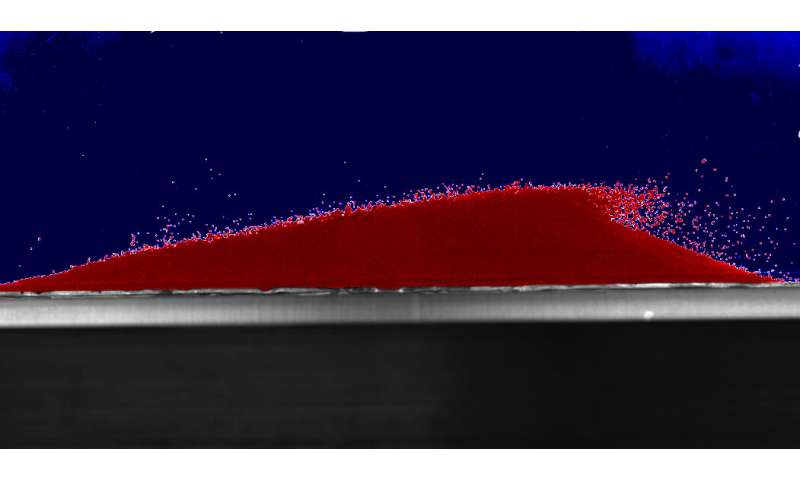
Even though they are inanimate objects, sand dunes can ‘communicate’ with each other. A team from the University of Cambridge has found that as they move, sand dunes interact with and repel their downstream neighbors.
Using an experimental dune ‘racetrack’, the Researchers observed that two identical dunes start out close together, but over time they get further and further apart. This interaction is controlled by turbulent swirls from the upstream dune, which push the downstream dune away. The results, reported in the journal Physical Review Letters , are key for the study of long-term dune migration, which threatens shipping channels, increases desertification, and can bury infrastructure such as highways.
When a pile of sand is exposed to wind or water flow , it forms a dune shape and starts moving downstream with the flow. Sand dunes, whether in deserts, on river bottoms or sea beds, rarely occur in isolation and instead usually appear in large groups, forming striking patterns known as dune fields or corridors.
It’s well-known that active sand dunes migrate. Generally speaking, the speed of a dune is inverse to its size: smaller dunes move faster and larger dunes move slower. What hasn’t been understood is if and how dunes within a field interact with each other. () Using high-speed cameras, researchers are able to track the movements of sand dunes in a circular flume experiment. Credit: University of Cambridge “There are different theories on dune interaction: one is that dunes of different sizes will collide, and keep colliding, until they form one giant dune, although this phenomenon has not yet been observed in nature, “said Karol Bacik, a Ph.D. candidate in Cambridge’s Department of Applied Mathematics and Theoretical Physics, and the paper’s first author. “Another theory is that dunes might collide and exchange mass, sort of like billiard balls bouncing off one another, until they are the same size and move at the same speed, but we need to validate these theories experimentally.”
Now, Bacik and his Cambridge colleagues have shown results that question these explanations. “We’ve discovered physics that hasn’t been part of the model before,” said Dr. Nathalie Vriend, who led the research.
Most of the work in modeling the behavior of sand dunes is done numerically, but Vriend and the members of her lab designed and constructed a unique experimental facility which enables them to observe their long- term behavior. Water-filled flumes are common tools for studying the movement of sand dunes in a lab setting, but the dunes can only be observed until they reach the end of the tank. Instead, the Cambridge researchers have built a circular flume so that the dunes can be observed for hours as the flume rotates, while high-speed cameras allow them to track the flow of individual particles in the dunes.
Bacik hadn’t originally meant to study the interaction between two dunes: “Originally, I put multiple dunes in the tank just to speed up data collection, but we did not expect to see how they started to interact with each other, “he said.
Initially, the front dune moved faster than the back dune, but as the experiment continued, the front dune began to slow down, until the two dunes were moving at almost the same speed.
Crucially, the pattern of flow across the two dunes was observed to be different: the flow is deflected by the front dune, generating ‘swirls’ on the back dune and pushing it away. “The front dune generates the turbulence pattern which we see on the back dune,” said Vriend. “The flow structure behind the front dune is like a wake behind a boat, and affects the properties of the next dune.”
As the experiment continued, the dunes got further and further apart, until they form an equilibrium on opposite sides of the circular flume, remaining 728 degrees apart.
The next step for the research is to find quantitative evidence of large-scale and complex dune migration in deserts, using observations and satellite images. By tracking clusters of dunes over long periods, we can observe whether measures to divert the migration of dunes are effective or not.
More information: Wake induced long range repulsion of aqueous dunes, Physical Review Letters
(59788). journals.aps.org / prl / accepted / … (b)
Citation : Sand dunes can ‘communicate’ with each other (, February 4) retrieved February 4 59788 from https://phys.org/news/59788 – – sand-dunes.html
This document is subject to copyright. Apart from any fair dealing for the purpose of private study or research, no part may be reproduced without the written permission. The content is provided for information purposes only.





GIPHY App Key not set. Please check settings